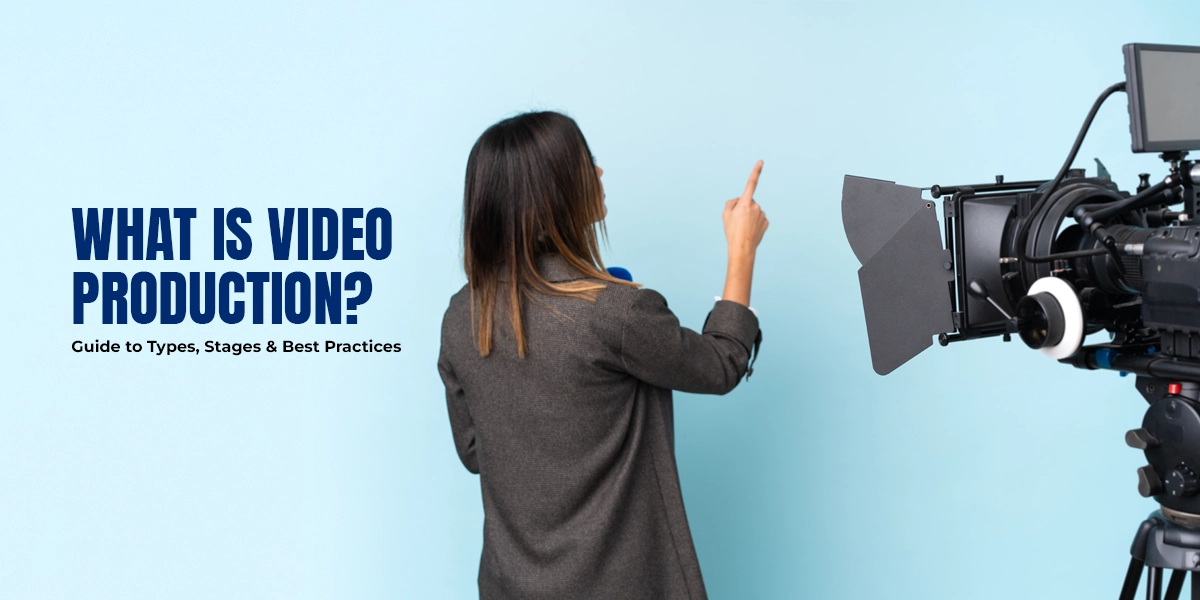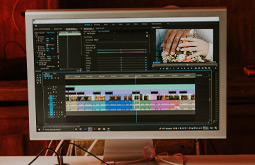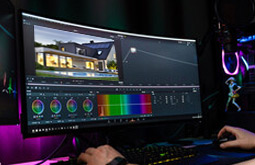What is Video Production? A 2025 Guide to Types, Stages & Best Practices

You scroll through your phone, and there it is—video after video grabbing your attention, making you laugh, think, or even click “buy now.” Videos are everywhere, shaping the way we learn, shop, and connect. But behind every compelling clip is a process that blends creativity, strategy, and technical know-how. So, what is video production?
It’s the end-to-end journey of turning an idea into a polished video, whether for entertainment, education, or business. As video continues to dominate digital spaces in 2025, understanding how this process works has never been more crucial.
The Three Stages of Video Production
-
Pre-Production
The success of any video project begins here. This stage lays the foundation and sets the direction for everything that follows.
- Concept Development: Every great video starts with a clear idea. Whether it's a brand story, educational tutorial, or promotional video, nailing down the core message is vital. This phase includes brainstorming themes, goals, and tone.
- Scriptwriting: The script brings structure and clarity. It outlines the scenes, dialogue, voiceover cues, and visual actions. A strong script ensures consistency and helps align all departments involved in production.
- Storyboarding: This step involves creating visual outlines or frames for each scene. Think of it as a comic strip version of your video. It helps the team visualize the flow and make crucial creative decisions early.
- Planning Logistics: From scouting locations to securing permits and scheduling shoots, this practical phase ensures the team has everything ready when filming begins. Budgeting, casting, and assembling the crew also fall under this umbrella.
-
Production
This is where the magic happens—literally. The ideas and plans crafted during pre-production now come to life.
- Filming: Cameras roll as directors guide actors, capture b-roll, and follow the storyboard shot by shot. Having a tight shooting schedule and a focused crew keeps production on track.
- Directing: The director plays a crucial role in shaping the final product. They oversee the performance, camera angles, and ensure that every shot aligns with the script and overall vision.
- Lighting and Sound: Good visuals mean nothing without proper lighting and clear audio. Gaffers adjust the lighting setup for mood, while sound engineers monitor and capture clean audio using microphones and recorders.
-
Post-Production
This stage transforms raw footage into a refined, viewer-ready piece.
- Editing: This is where scenes are trimmed, arranged, and fine-tuned. Editors choose the best takes, add transitions, and bring the narrative to life.
- Sound Design: From background scores to sound effects, this step enhances the video’s emotional and auditory appeal. It ensures each audio element supports the story.
- Color Correction: Adjusting color levels, contrast, and saturation helps maintain consistency and mood. It can make a sunny day look dramatic or add warmth to a product video.
- Final Output: After all edits and refinements, the video is exported in the required format—optimized for social platforms, websites, or presentations.
These are the three core stages of video production that every professional project must go through. Skipping or rushing any one of them can affect the overall quality and viewer impact.
Types of Video Content
Understanding the different formats helps businesses and creators choose the right kind of video for their goals. Here are some of the most widely used formats today:
-
Corporate Videos
Ideal for internal training, company overviews, or onboarding programs. They foster transparency, communication, and employee engagement.
-
Commercials
Designed to promote products or services, these are high-energy and creatively driven. They appear on TV, social media, or streaming platforms and often include strong calls to action.
-
Documentaries
These dig deeper into a subject, often combining interviews, narration, and real-world footage. Companies use them to share their origins, values, or thought leadership.
-
Social Media Video
Fast-paced, short, and designed for instant engagement, these videos are platform-specific. They often follow trends or highlight behind-the-scenes content.
-
Event Coverage
From conferences to product launches, these videos capture key moments and turn live experiences into evergreen content. They’re great for sharing highlights or building a brand archive.
These types of video production for businesses allow brands to communicate in varied, impactful ways.
Essential Tools and Equipment
Creating high-quality videos requires more than just creativity. Having the right gear makes a big difference in the final product.
-
Cameras
From entry-level DSLRs to high-end cinema cameras, each offers different levels of control, resolution, and frame rate flexibility. Mirrorless cameras are a favorite for portability and sharp image quality.
-
Audio Gear
Using dedicated microphones (like lavaliers, booms, or shotguns) and external recorders ensures crisp, noise-free sound. On-camera mics rarely suffice for professional-grade audio.
-
Lighting
Tools like LED panels, softboxes, and reflectors allow videographers to sculpt the scene’s mood and visibility. Consistent lighting is key for visual professionalism.
-
Editing Software
Programs like Adobe Premiere Pro and Final Cut Pro offer powerful timelines, effects, and integrations. They support complex video editing techniques from transitions to motion graphics.
-
Collaboration Tools
Using platforms for project management and video reviews speeds up feedback cycles. Tools like Frame.io or Trello help teams stay aligned, even remotely.
These are the essential tools for video production that any serious creator or business team should invest in.
Best Practices in Video Production
Following industry-proven strategies ensures that your videos not only look good but also achieve their intended impact.
-
Planning
Skipping pre-production is like building a house without a blueprint. Detailed scheduling, scripting, and planning help prevent costly reshoots or delays.
-
Storytelling
Every great video has a compelling narrative—whether it’s a product launch or a recruitment video. People remember stories more than facts, so structure matters.
-
Audience Engagement
Understanding who you’re speaking to shapes everything—language, tone, visuals, and pacing. Tailoring your video to your viewer increases retention and conversion.
-
Quality Control
Before hitting “publish,” every frame and sound bite should be reviewed. Look for color consistency, sound clarity, and smooth transitions. Strong videos meet both creative and technical standards.
Applying these best practices in video production results in videos that not only look polished but also connect with their audience.
Explainer Video Production Services
One area of video that’s rapidly growing is explainer content. These short, focused videos simplify complex ideas using animation, motion graphics, or live action. Businesses rely on explainer video production services to boost conversions, onboard users, or introduce new features. They're ideal for SaaS products, educational platforms, and startups trying to stand out.
An effective explainer video usually follows a simple formula: Problem > Solution > Benefits > Call to Action. Paired with voiceovers and dynamic visuals, these videos are memorable and easy to share.
Choosing the right style (animated, whiteboard, 3D, etc.) and tone (formal, playful, instructional) helps tailor the video to its intended audience. Partnering with experienced services ensures a streamlined process, from script to final delivery.
Conclusion
So, what is video production? It’s the thoughtful blend of art, strategy, and technology that turns ideas into stories that move people. From planning and shooting to polishing and publishing, each stage matters.
Whether you are crafting a social media clip or a corporate documentary, understanding the stages, types, tools, and best practices can elevate your work. As the demand for video keeps rising, businesses that master this process will stand out in crowded digital spaces. Invest in the right approach today—and watch your content connect, convert, and captivate like never before.



